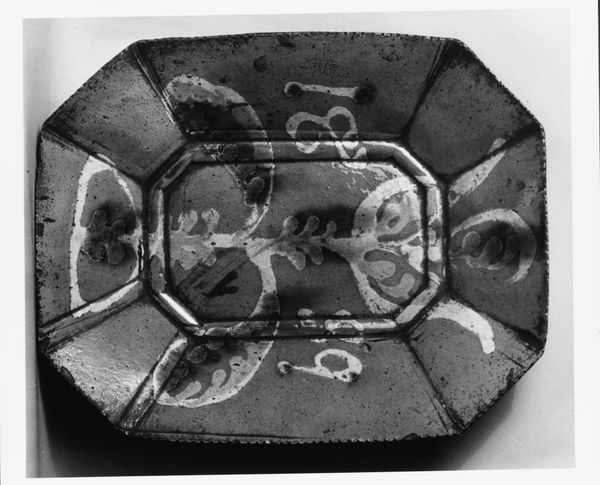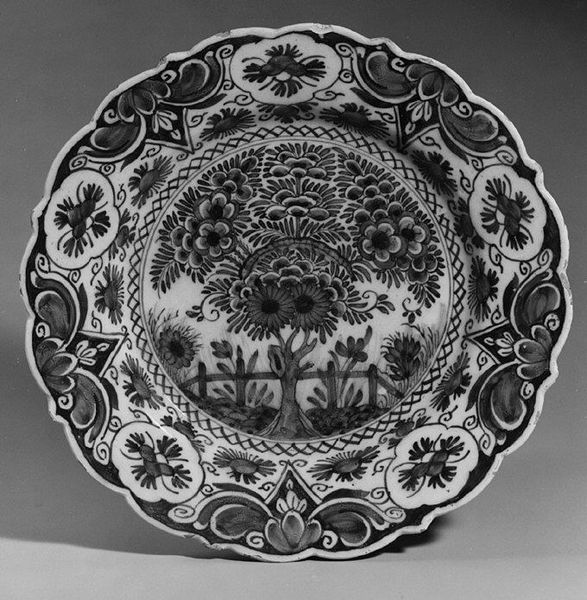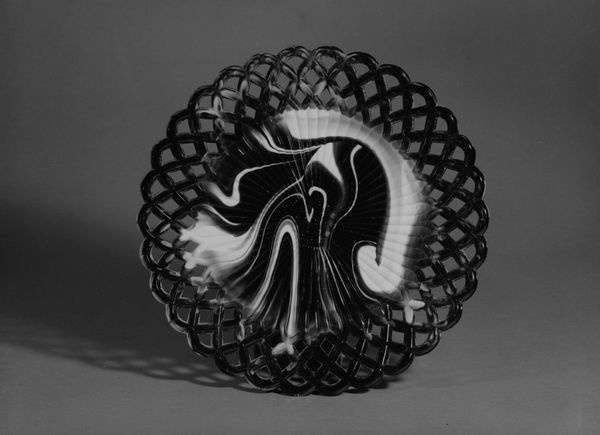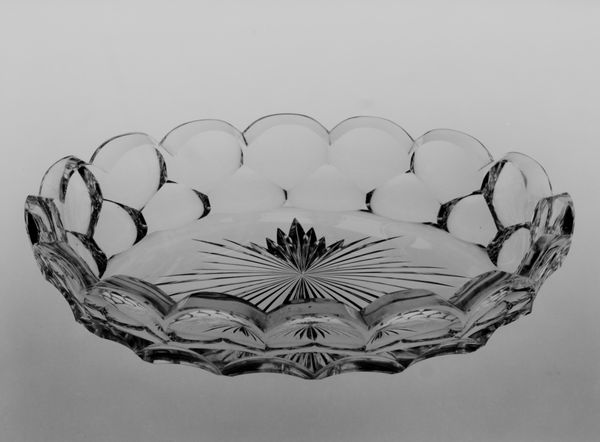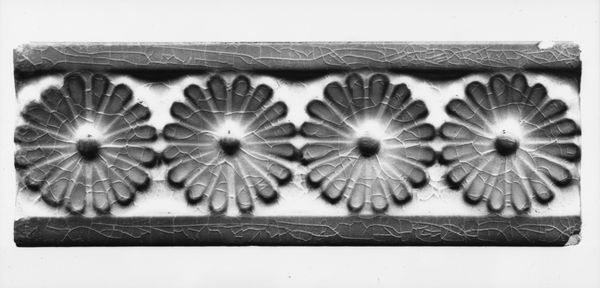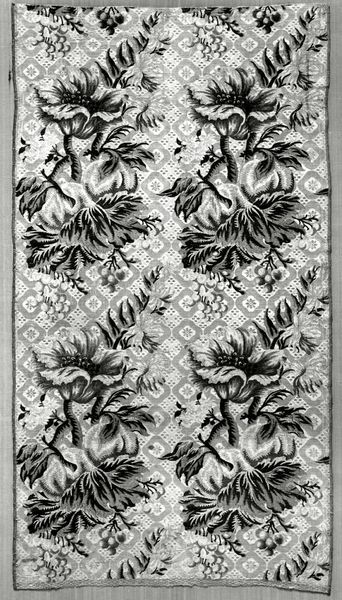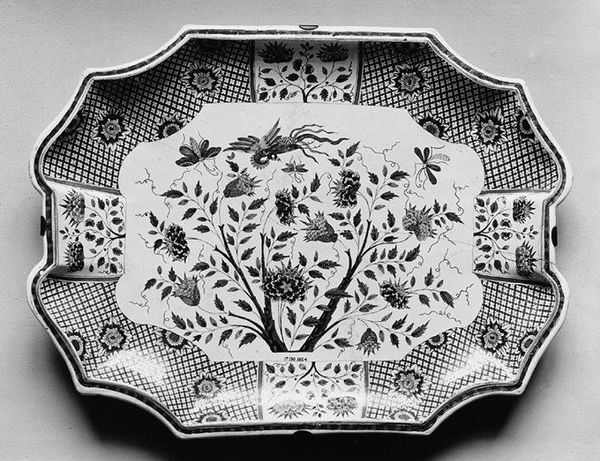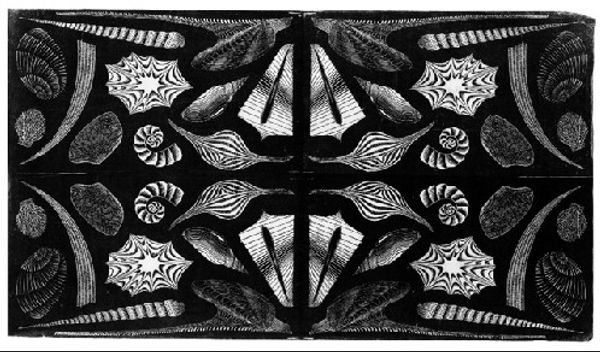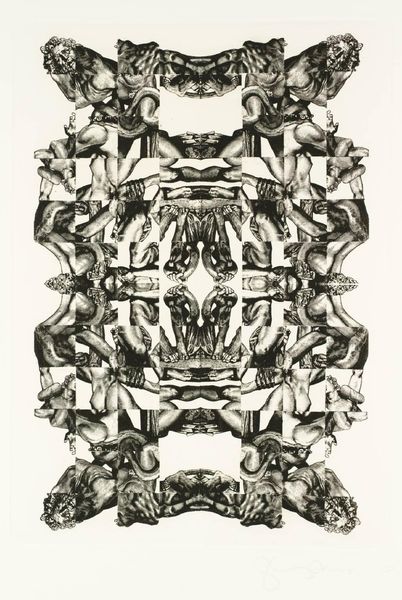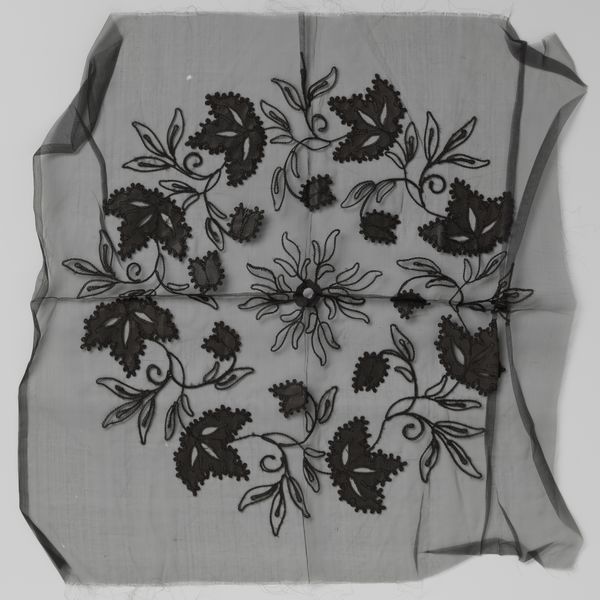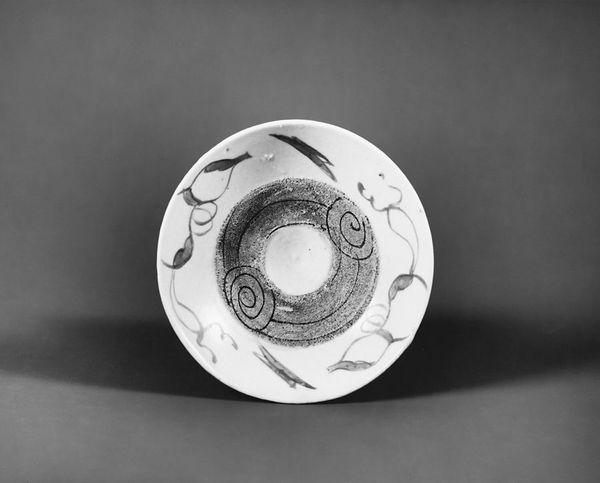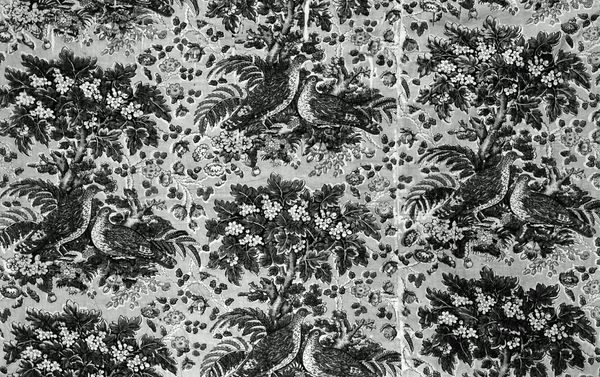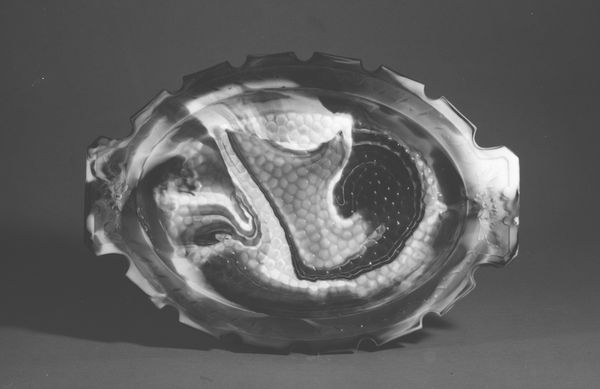
ceramic, porcelain, sculpture
#
sculpture
#
ceramic
#
porcelain
#
sculpture
#
decorative-art
Dimensions: 9 1/2 × 12 in. (24.1 × 30.5 cm)
Copyright: Public Domain
Curator: Let’s explore this porcelain “Dish,” likely crafted between 1810 and 1835 by the Derby Porcelain Manufactory. It’s an exquisite piece in the decorative arts tradition, currently held at the Metropolitan Museum of Art. Editor: It strikes me immediately—such ornate detail! The stark contrasts between the light background and the dark floral motifs give it a dramatic, almost theatrical air. It’s very visually dense. Curator: Yes, the use of porcelain speaks to the context of elite artistry of the time. Derby was renowned for its high-quality ceramics, feeding into a culture of display and refined consumption. We have to consider the labor involved; who were the hands that molded and painted this? And how did this object reflect and shape social values around dining and display? Editor: Absolutely. Thinking about the process – the specific clay, the firing temperatures, the precise hand movements needed for that level of detail – reveals a fascinating story about the material's potential. The porcelain itself carries a certain economic and cultural weight that shaped how these kinds of artworks were perceived. Were pieces such as this for a rising middle class? Or strictly meant for a high society dining table? Curator: I believe that decorative arts played an active role in signaling status within society, defining cultural norms, and reinforcing certain power structures. And in relation to your point, who has access to beauty? Are luxury artworks an attempt at social mobility, for some? Does this dish emulate the style of aristocrats and royalty for aspirational consumers? It leads us to question whether the decorative style normalizes exclusivity through a seemingly innocuous object. Editor: Agreed. Even in its stasis today, behind glass, the piece remains a reminder of how material culture reflects social hierarchies and economic conditions. The very act of creating it consumed labor, time and expertise; and possessing the finished product becomes another marker of privilege. Curator: Considering its presence now, here, in this exhibit, in The Met, in New York City, it is important to remember that the meaning of artwork will also change as society’s relationship with these types of decorative sculptures continue to change as well. Editor: The level of craft reminds us that this dish represents a system of value that needs close examination when looking at similar porcelain works today.
Comments
No comments
Be the first to comment and join the conversation on the ultimate creative platform.
